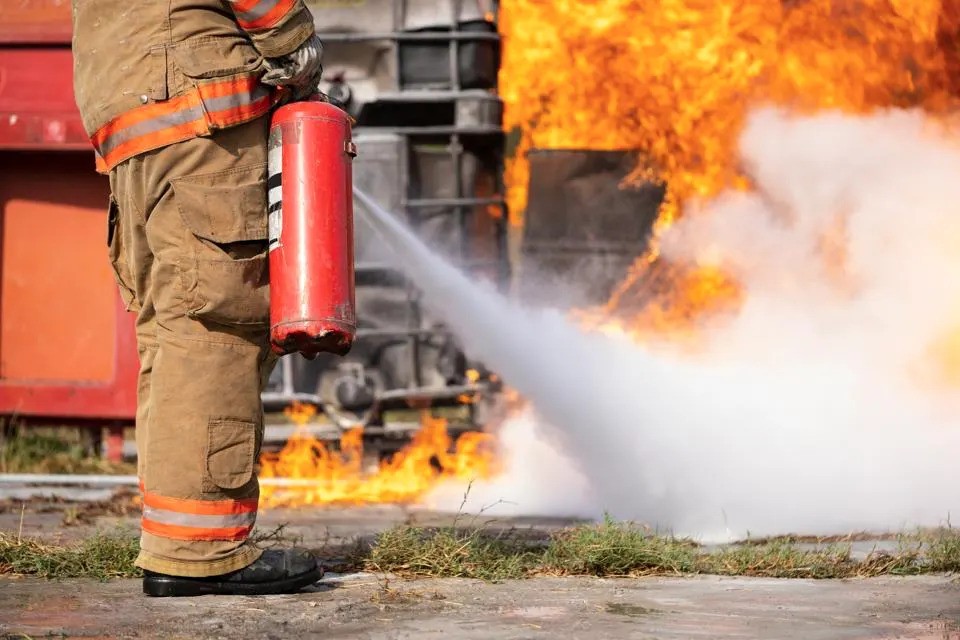December 15, 2024
Fire losses on construction sites in North America have become an increasingly critical issue, posing significant financial, operational and safety challenges to the construction industry. These incidents, often catastrophic in nature, not only lead to project delays and the destruction of valuable property but also put lives at risk.
Having spent years immersed in the construction and safety industries, I’ve witnessed firsthand the devastating impact fires can have on projects, companies and communities. It’s this perspective that drives me to raise awareness and advocate for stronger preventive measures to combat these risks.

Construction sites are inherently prone to fire hazards due to their dynamic nature, temporary conditions and the range of flammable materials used. In North America, the frequency and severity of construction site fires have escalated in recent years, prompting industry professionals and regulators to take action.
Between 2017 and 2021, construction sites in the U.S. alone experienced over 4,000 fires annually, resulting in an estimated $370 million in property damage, according to the National Fire Protection Association (NFPA).
While statistics help quantify the problem, they don’t convey the emotional and human toll. I recall visiting a site shortly after a major fire; the crew’s faces reflected a mix of frustration, sadness and determination. For many, it wasn’t just about rebuilding the project—it was about rebuilding their confidence and trust in safety protocols. This is why fire prevention isn’t just a technical or financial issue—it’s a deeply human one.
Several key factors contribute to the high incidence of fires on construction sites.
1. Hot Work Activities: One of the most significant risks stems from "hot work" activities like welding, cutting, soldering and grinding. These tasks, while essential to construction, can quickly become a fire hazard without proper preparation. I’ve seen sites where a single stray spark, unnoticed at the time, led to an inferno hours later. This highlights the importance of dedicated fire watchers and stringent precautions.
2. Arson: Construction sites are often left unattended overnight or on weekends, making them prime targets for arson. I recall consulting on a project where a single act of vandalism set back the timeline by months and caused nearly a million dollars in losses. Strong security measures, such as fencing, surveillance and patrols, can significantly mitigate this risk.
3. Improper Storage Of Flammable Materials: On too many occasions, I’ve seen volatile substances like paints and solvents stored in open areas without adequate safety measures. These materials, if ignited, can turn a small fire into a raging blaze within minutes. Proper storage solutions, such as fire-resistant cabinets, are non-negotiable when it comes to site safety.
The consequences of a fire on a construction site extend beyond immediate property damage. Fires disrupt timelines, inflate budgets and damage reputations. I’ve worked with small contractors who struggled to stay afloat after a fire incident. For them, the ripple effects included increased insurance premiums, strained client relationships and difficulty securing future projects. These stories serve as a stark reminder of why proactive fire prevention is crucial.
Addressing fire risks requires a comprehensive approach that blends preventive and reactive strategies.
• Enhanced Site Security: A well-protected site is less vulnerable to arson and accidental fires. Measures like surveillance cameras, fencing and security patrols are relatively low-cost but highly effective.
• Fire Safety Training: Ensuring all workers understand fire hazards and know how to respond appropriately can be lifesaving. On one project I managed, a team’s quick action during a minor fire—extinguishing it before it spread—was directly attributed to a robust training program.
• Temporary Fire Protection Systems: Portable extinguishers, sprinklers and alarms should be standard on any construction site. These systems are especially critical during early project phases when structures are most vulnerable.
Detecting fires during off-hours remains one of the greatest challenges. Traditional surveillance systems, while helpful, often have limitations. I’ve seen promising results with AI-driven fire detection systems that combine thermal imaging, smoke sensors and smart algorithms. These systems can provide real-time alerts and even activate automated suppression systems, potentially saving millions in damages and countless hours of recovery.
Fire losses on construction sites are a serious challenge, but they’re not inevitable. My experience has taught me that proactive measures—enhanced training, cutting-edge technology and smarter storage solutions—can dramatically reduce the risk. More importantly, fostering a culture of fire safety awareness among all stakeholders can protect lives, investments and the future of construction projects.
As someone deeply invested in this industry, I urge construction professionals to treat fire prevention as more than a checklist item. By prioritizing safety and innovation, we can ensure that projects are completed safely and successfully, without the devastating setbacks of fire losses.